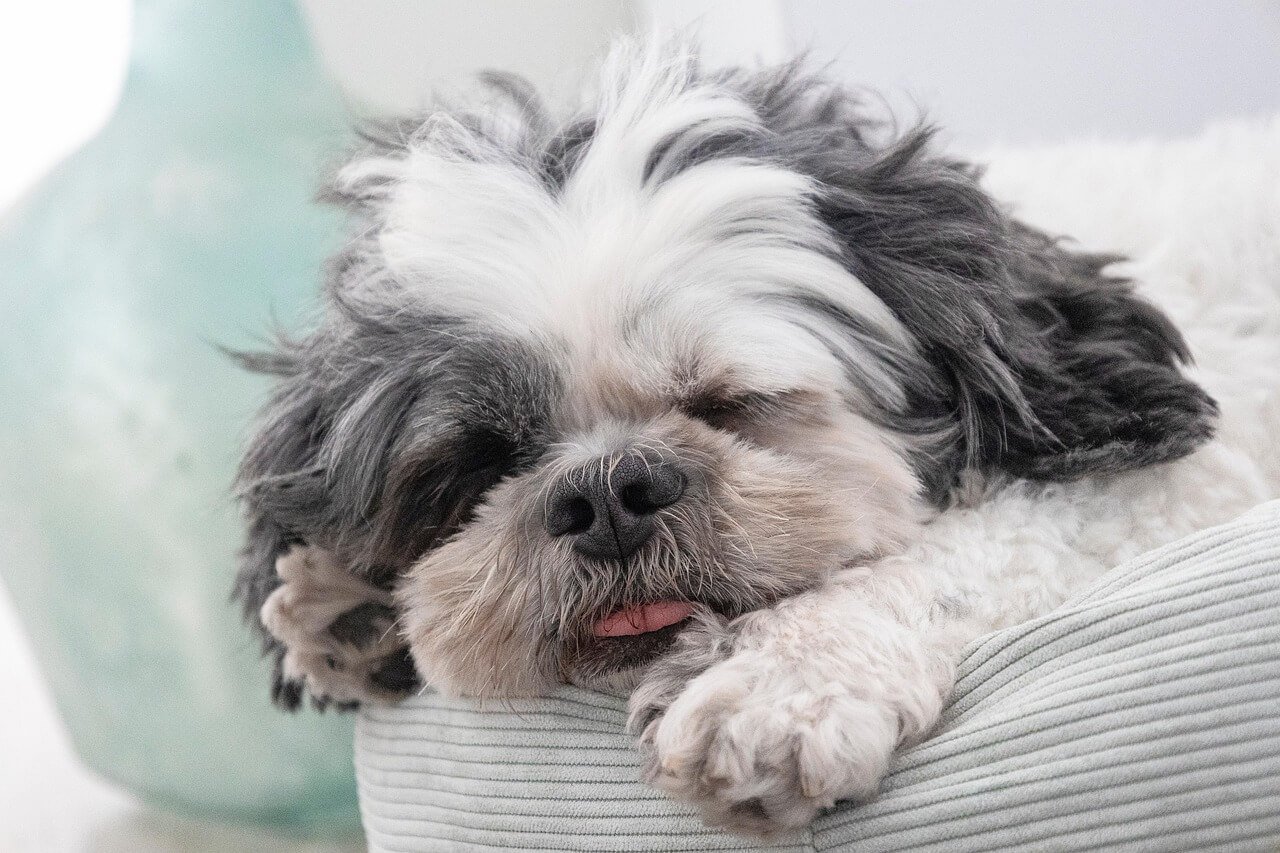Understanding Carpal Hyperextension in Dogs
Carpal hyperextension in dogs is a condition that affects the carpus, or wrist joint, causing it to bend excessively and compromising mobility. This issue can be painful for your furry friend and may result from injury, degenerative conditions, or congenital factors. Recognizing the signs early and seeking appropriate treatment is crucial for improving your dog’s quality of life. In this blog post, we’ll explore what carpal hyperextension is, its causes, symptoms, and how you can support your dog through diagnosis, treatment, and recovery. Whether you’re a concerned pet owner or simply curious about canine health, this guide provides valuable insights into managing this challenging condition.
Causes of Carpal Hyperextension in Dogs
Carpal hyperextension can occur due to various reasons, ranging from trauma to underlying health issues. Understanding these causes helps in identifying potential risks and taking preventive measures.
Traumatic Injury:
A sudden impact, such as a fall or accident, can damage ligaments and tendons in the carpus, leading to hyperextension.Degenerative Joint Disease:
Age-related wear and tear on the joints can weaken the structures supporting the carpus, making it more prone to hyperextension.Congenital Factors:
Some dogs are born with structural abnormalities in their carpal joints, predisposing them to hyperextension later in life.Overuse or Repetitive Strain:
Activities like excessive running, jumping, or working can strain the carpus over time, increasing the risk of instability.Obesity:
Excess weight places additional stress on the joints, potentially contributing to carpal hyperextension in susceptible dogs.
By understanding these causes, you can work with your veterinarian to address underlying issues and reduce the likelihood of carpal hyperextension in your dog.

Signs and Symptoms of Carpal Hyperextension
Recognizing the signs of carpal hyperextension is essential for early intervention. Keep an eye out for these common symptoms if you suspect your dog may be affected.
Abnormal Wrist Positioning:
One of the most noticeable signs is the carpus bending excessively backward, giving the paw an unusual appearance.Limping or Lameness:
Dogs with carpal hyperextension often limp or avoid putting weight on the affected leg due to pain or instability.Swelling Around the Wrist:
Inflammation in the carpal area may indicate injury or strain to the joint structures.Difficulty Walking or Standing:
Affected dogs may struggle to maintain balance or stand properly, especially on slippery surfaces.Reluctance to Engage in Physical Activity:
Dogs may become less active or hesitant to jump, run, or play due to discomfort in the affected limb.
If you notice any of these symptoms, consult your veterinarian promptly to determine the cause and begin appropriate treatment.
Check this guide 👉Joint Pain in Dogs: Best 7 Expert Tips!
Check this guide 👉Understanding the Coxofemoral Joint in Dogs: Best 7 Tips!
Check this guide 👉Understanding Myopathy in Dogs: Best 7 Expert Tips!
Preventive Measures for Carpal Hyperextension | Treatment Options for Affected Dogs |
|---|---|
Maintain a healthy weight to reduce joint stress | Use orthopedic braces or splints |
Avoid high-impact activities on hard surfaces | Administer prescribed anti-inflammatory medications |
Provide joint supplements like glucosamine | Consider physical therapy for rehabilitation |
Schedule regular vet check-ups for early detection | Surgical intervention for severe cases |
Train dogs gently to prevent repetitive strain | Manage pain with proper rest and care |
Diagnosis Process for Carpal Hyperextension
Diagnosing carpal hyperextension involves a combination of physical exams, imaging tests, and ruling out other conditions. Here’s what you can expect during the diagnostic process.
Physical Examination:
Your vet will assess your dog’s gait, range of motion, and overall joint stability to identify abnormalities in the carpus.X-rays (Radiographs):
X-rays help visualize the bones and joint alignment, revealing fractures, arthritis, or other structural issues.Ultrasound Imaging:
Ultrasound may be used to evaluate soft tissues like ligaments and tendons for tears or inflammation.MRI or CT Scans:
Advanced imaging techniques provide detailed views of the carpal joint, useful for complex cases requiring precise diagnosis.Ruling Out Other Conditions:
The vet will differentiate carpal hyperextension from similar conditions, such as fractures or nerve damage, to ensure accurate treatment planning.
A thorough diagnosis ensures that your dog receives the most effective care tailored to their specific needs.
Rehabilitation Exercises for Dogs with Carpal Hyperextension
Physical therapy plays a vital role in helping dogs recover from carpal hyperextension. These exercises aim to strengthen muscles, improve flexibility, and restore function to the affected limb.
Controlled Leash Walks:
Short, controlled walks on a leash help rebuild strength without overexerting the injured joint.Range of Motion Exercises:
Gentle stretching and flexion/extension movements maintain joint mobility and prevent stiffness.Hydrotherapy Sessions:
Water-based exercises reduce stress on the joints while providing resistance for muscle strengthening.Balance Training:
Using tools like balance boards or wobble cushions improves proprioception and stabilizes the carpus.Massage Therapy:
Soft tissue massage alleviates tension, promotes circulation, and aids in faster recovery.
Incorporating these exercises under professional guidance can significantly enhance your dog’s rehabilitation journey.
Managing Pain and Discomfort
Managing pain effectively is crucial for dogs dealing with carpal hyperextension. Addressing discomfort not only improves your dog’s well-being but also supports their recovery process.
Prescription Pain Medications:
Non-steroidal anti-inflammatory drugs (NSAIDs) help reduce inflammation and alleviate pain in affected joints.Cold Compresses:
Applying cold packs to the carpus can reduce swelling and numb the area after injury or surgery.Heat Therapy:
Warm compresses promote blood flow and relax stiff muscles, aiding in long-term comfort.Proper Rest and Confinement:
Limiting activity allows the joint to heal without further strain, preventing worsening of the condition.Comfortable Bedding:
Providing orthopedic beds supports the joints and ensures your dog rests comfortably.
Addressing pain holistically ensures your dog feels better while focusing on recovery.
Dietary Support for Joint Health
Nutrition plays a significant role in supporting joint health and aiding recovery from carpal hyperextension. Incorporating specific dietary elements can benefit your dog’s overall well-being.
High-Quality Protein Sources:
Lean proteins like chicken or fish provide essential amino acids for muscle repair and maintenance.Omega-3 Fatty Acids:
Found in fish oil, omega-3s have anti-inflammatory properties that reduce joint swelling and discomfort.Glucosamine and Chondroitin Supplements:
These compounds support cartilage health and slow the progression of degenerative joint diseases.Antioxidant-Rich Foods:
Blueberries, spinach, and sweet potatoes boost the immune system and protect against oxidative stress.Balanced Calorie Intake:
Maintaining a healthy weight prevents additional strain on the joints, reducing the risk of complications.
A nutrient-rich diet complements medical treatments and enhances your dog’s recovery potential.
Emotional Support for Your Dog
Dealing with carpal hyperextension isn’t just physical—it also takes an emotional toll on your dog. Providing emotional support fosters resilience and strengthens your bond during this challenging time.
Spend Quality Time Together:
Engage in low-impact activities like gentle grooming or cuddling to reassure your dog they’re loved.Positive Reinforcement:
Reward calm behavior and small milestones in recovery with treats or praise to build confidence.Create a Safe Space:
Designate a quiet, comfortable area where your dog can retreat and feel secure when overwhelmed.Maintain Routine:
Sticking to familiar routines minimizes stress and provides a sense of normalcy for your pet.Monitor Behavioral Changes:
Watch for signs of anxiety or depression, such as withdrawal or loss of appetite, and address them promptly.
Emotional support ensures your dog remains mentally strong and motivated throughout their healing journey.
Frequently Asked Questions About Carpal Hyperextension in Dogs
Can carpal hyperextension be cured?
While mild cases can often be managed with rest and therapy, severe cases may require surgery for long-term improvement.
Is this condition common in all dog breeds?
No, certain breeds with predisposed joint weaknesses are more susceptible, but any dog can develop it due to injury or overuse.
How long does recovery typically take?
Recovery time varies depending on the severity and treatment method, ranging from weeks to months.
Are there any home remedies for carpal hyperextension?
Home care should always complement professional veterinary advice; never attempt treatment without consulting a vet.
Can carpal hyperextension recur after treatment?
Yes, especially if preventive measures aren’t taken, such as weight management and avoiding strenuous activities.
Supporting Your Dog Through Carpal Hyperextension
Carpal hyperextension can be a challenging condition for both dogs and their owners, but with early detection, proper treatment, and consistent care, many dogs regain mobility and lead happy lives. By staying vigilant for symptoms, working closely with your veterinarian, and implementing preventive measures, you can minimize the impact of this condition on your furry companion. Remember, patience and dedication are key—your love and support will go a long way in helping your dog overcome the challenges of carpal hyperextension. Together, you can navigate this journey toward healing and improved quality of life.
Canned Pumpkin for Cat Diarrhea: Best 7 Expert Tips! Natural remedy to firm stools, soothe upset bellies, and support gut health safely.
Can a Cat Give You Scabies? Best 7 Expert Tips! Discover the truth about feline mites, human skin risks, and how to protect yourself—without panic.
Cat Flea vs Human Flea: Best 7 Expert Tips! Discover the truth about bites, species, and how to eliminate infestations for good.
Weird Cat Behaviors: Best 7 Expert Tips! Discover why cats do strange things—and how to understand, not punish, their instincts for a happier home.





